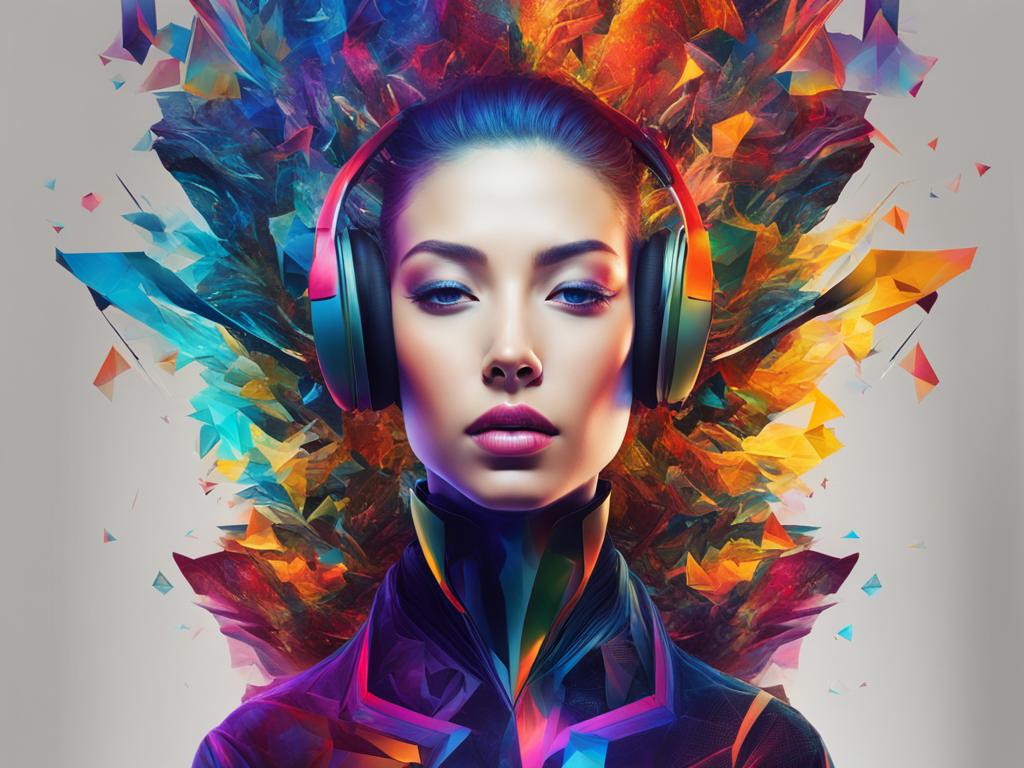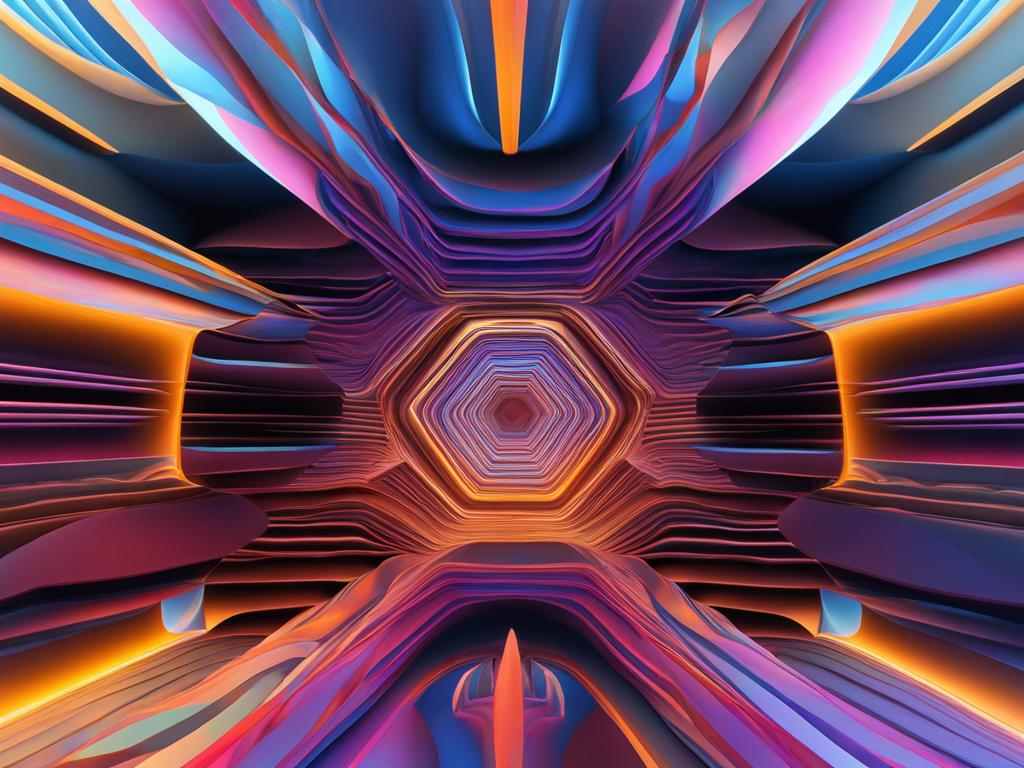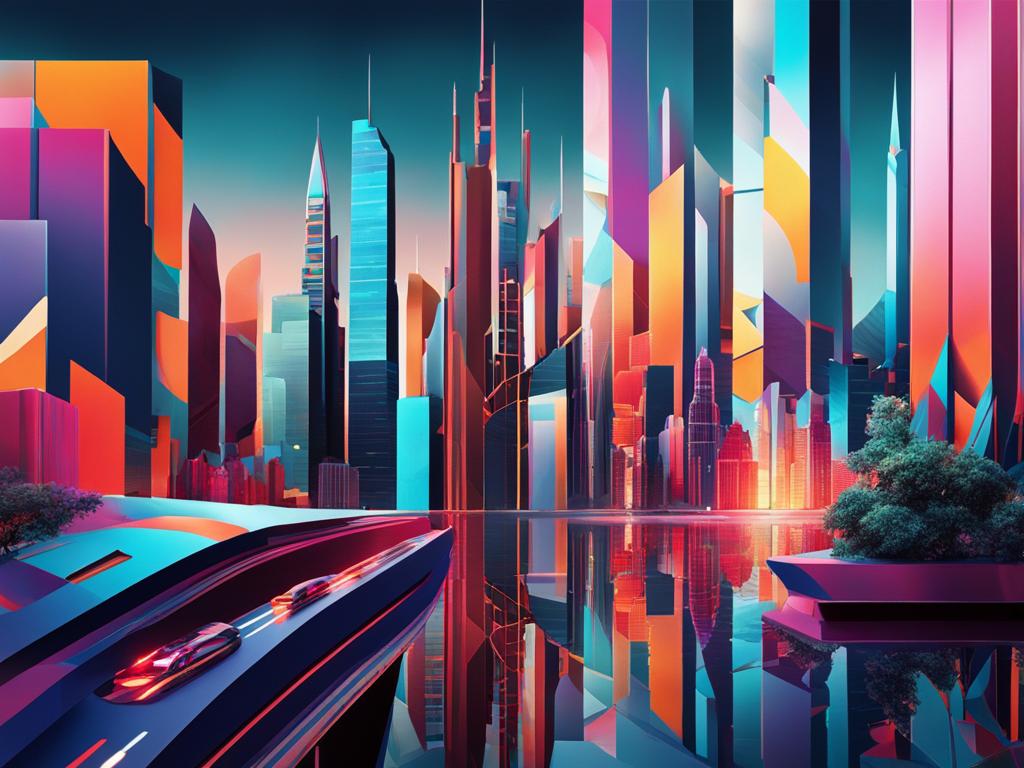Virtual Reality Art is a captivating and transformative medium that has the potential to redefine artistic expression and viewer experiences. Through the use of virtual reality technology, artists are able to create immersive and interactive environments that transport viewers to new worlds and challenge their perceptions of reality.

In this article, we will explore the evolution of virtual reality art and its impact on traditional art forms. We will also showcase emerging VR art galleries and exhibitions and examine how virtual reality is redefining viewer experiences. Additionally, we will discuss the potential of virtual reality technology in shaping the future of artistic expression.
At the core of virtual reality art is the ability to create truly unique and engaging experiences for viewers. The medium encourages exploration and interaction unlike any other art form, allowing viewers to become active participants in the artistic process. With each new development in technology, artists are able to push the boundaries of creativity and explore new possibilities beyond traditional art forms.
Join us as we delve into the awe-inspiring world of Virtual reality art!
Evolution of Virtual Reality Art
Virtual reality art has come a long way since its inception. From its early beginnings in the 1960s when Ivan Sutherland created the first head-mounted display to today’s state-of-the-art VR devices, VR art has undergone a remarkable evolution.
Technological advancements are key factors that have fueled this evolution, enabling artists to create immersive and interactive works that push the boundaries of traditional art forms. One of the most significant factors has been the development of more powerful and affordable VR hardware and software, such as Oculus Rift, HTC Vive, Tilt Brush, Google VR and many others.
Advancements in the development of 3D modeling and virtual world-building tools have also played a crucial role in the evolution of virtual reality art. Artists can now create virtual spaces that are interactive, which allows the audience to become a part of the piece, creating unique shared experiences.
In recent years, virtual reality art has emerged from the realm of academic research and has become a mainstream art form, paving the way for the development of digital galleries and exhibitions. By allowing for an immersive experience, VR art has the potential to change the way we engage with art, stimulating our senses and evoking deep emotional responses.
As the technology underlying virtual reality advances, the possibilities of VR art become endless and much more accessible for anyone. Given that VR technology is still in the relative beginning stages of its development, the future of VR art has yet to be written, yet it’s bright enough and full of potential wonders.
Impact on Traditional Art Forms
Virtual reality art presents a remarkable departure from traditional art forms, which have been admired for centuries. Its technological advancements have enabled artists to challenge traditional artistic techniques, pushing the boundaries of creativity and redefining what it means to interact with an artwork.
One of the most significant impacts of virtual reality art is its ability to transport viewers into an entirely new reality. Unlike traditional art forms, which rely on two-dimensional representations to convey the artist’s message, virtual reality art places the viewer inside the artwork, creating an immersive and transformative experience.
Virtual reality art also challenges traditional artistic techniques through its interactive nature. Unlike static artwork that exists solely for aesthetic enjoyment, virtual reality art implements a dynamic and interactive element, allowing for interaction and engagement with the artwork itself. Such opportunities create a unique experience that encourages emotional engagement and expression.
As we continue to witness innovative virtual reality art developments, we are equally observing how traditional art forms, such as painting and sculpture, are integrating virtual reality effects into their mediums. This integration amplifies the impact and reach of virtual reality art, making it a vital part of both contemporary and traditional art forms.
Overall, virtual reality art has a transformative impact on the artistic landscape, pushing the boundaries of traditional art forms and creating a new standard of artistic expression.
Emerging VR Art Galleries and Exhibitions
The world of virtual reality art is expanding rapidly, with a growing number of emerging VR art galleries and exhibitions. These groundbreaking spaces are transforming the way we experience and interact with art, taking us on immersive journeys beyond the confines of the physical world.
One notable example is the Dreams of Dali exhibition, held at the Salvador Dali Museum in Florida. This exhibition took visitors on a mesmerizing visual and auditory journey through some of the artist’s most iconic works, using virtual reality technology to push the boundaries of artistic expression.
Another noteworthy example is The VR Museum of Fine Art, a groundbreaking virtual reality museum that brings together a collection of iconic art masterpieces from around the world in an immersive and interactive environment. Visitors can explore the museum’s galleries, interacting with the artworks and learning about their historical and cultural contexts.
These emerging VR art galleries and exhibitions are breaking down barriers to art accessibility, offering new opportunities for artists and audiences alike. They are reshaping the art world and opening up fresh avenues for artistic expression and engagement.
Redefining Viewer Experiences
Virtual Reality Art is taking viewer experiences to a whole new level by providing an immersive and interactive engagement with artworks. Through this technology, art enthusiasts can now explore the art world in ways that were once unimaginable. Not only can viewers observe artworks from different angles and perspectives, but also they can interact with the artworks in ways that were previously impossible.
With Virtual Reality Art, viewers can step inside a painting or sculpture and actively engage with it, feeling like they are part of the art piece. This newly acquired intimacy and connection to the artwork amplify the viewer’s experience, making it much more personal, meaningful and unforgettable.
“Virtual Reality Art is not just about looking at art, it is an experience that completely changes the context in which art is viewed” – Maria, a Virtual Reality Art enthusiast
The varied types of virtual reality content have allowed artists to design art in a way that takes advantage of the new medium and create astonishing art forms. Their endless possibilities lead to new kinds of interactions that not only stimulate the senses, but also the mind and imagination. From game-like virtual art exhibits to dreamlike environments, Virtual Reality Art opens up a world of possibilities never before seen.
As Virtual Reality technology continues to evolve, artists are pushing the limits of art experience and continuously creating unique and fascinating art forms. Virtual reality art offers a new way to think about the art of the future. Art is no longer just a static object that we view from afar. It is now an interactive, immersive world that we can be a part of.
The Future of Artistic Expression
Virtual reality art is at the forefront of a technological revolution that is pushing the boundaries of traditional artistic expression. As we continue to develop and refine the technology, the potential for artistic creation and innovation will only continue to grow.
Through virtual reality, artists can create immersive and interactive art experiences that would be impossible to replicate in the physical world. Not only does this allow for a heightened level of viewer engagement, but it also enables artists to explore new artistic horizons.
“Virtual reality allows for a level of creative freedom and experimentation that is unparalleled in traditional art forms.”
Imagine being able to step inside a virtual reality art installation, experiencing the artwork from every angle and interacting with it in new and exciting ways. This level of artistic immersion will usher in a new era of creativity and expression.
| Virtual Reality Art Advancements | Potential Impacts |
|---|---|
| Advances in graphics technology and VR hardware | Greater realism in virtual reality art, increased audience engagement |
| Integration with other technologies such as artificial intelligence and 5G networks | New forms of artistic expression, expanded possibilities for interactivity and immersion |
| Increased accessibility and affordability of VR technology | Wider reach for virtual reality art, new opportunities for emerging artists |
As virtual reality technology continues to evolve, so too will the realm of virtual reality art. The possibilities for artistic expression and audience engagement are virtually limitless, and we are only just scratching the surface of what this technology can achieve.
Join us in the next and final section as we explore the innovative use of virtual reality art in platforms such as Snapchat, and discuss the impact of this technology on social media and art accessibility.
Virtual Reality Artworks
Virtual reality art offers endless opportunities for artists to create immersive experiences for viewers. From surreal landscapes to interactive installations, virtual reality has become a new canvas for artistic expression.
One notable example of virtual reality art is the sculptural installation “Waves” by Theo Triantafyllidis. This piece immerses the viewer in a mesmerizing ocean of colors and shapes, with interactive elements that respond to the viewer’s movements.

Another fascinating example is the virtual reality painting “Starry Night” by Alex Mayhew. This artwork transports the viewer into Vincent Van Gogh’s famous painting, allowing them to explore and interact with the iconic landscape in a whole new way.
Virtual reality art is not limited to abstract or surreal pieces. The technology has also enabled artists to recreate traditional sculptures and paintings in a virtual environment. For instance, the VR museum “The VR Museum of Fine Art” hosts an impressive collection of virtual reality art reproductions, including iconic works such as Johannes Vermeer’s “Girl with a Pearl Earring.”
One particularly striking example of virtual reality sculpture is the piece “Tree” by artist Justin Bolognino. This installation presents a virtual tree that grows and transforms based on the visitor’s interactions, with stunning visuals and immersive sound effects.
Virtual reality art continues to evolve and expand, offering artists and viewers new frontiers of creativity and technology.
Understanding the Definition of Virtual Reality Art
Virtual reality art is an immersive art form that utilizes virtual reality technology to create interactive and transformative art experiences. It encompasses various art forms, including painting, sculpture, animation, and 3D modeling, all designed to be experienced in a virtual space.
The defining characteristics of virtual reality art include its immersion, interactivity, and transformative nature. Immersion refers to the feeling of being fully present in a virtual environment, thanks to high-quality graphics and realistic sound effects that create a sense of presence. Interactivity is the ability of the user to engage with the art form and alter it in real-time. Transformation refers to the way virtual reality art can change our perception of reality and challenge our preconceived notions of traditional art forms.
Virtual reality art is often compared to other forms of digital art, such as video art, but it differs in its capacity to create a fully immersive and interactive art experience. Virtual reality art blurs the line between what is real and what is virtual, allowing the viewer to engage with art in a completely new way.
The unique blend of technology, creativity, and immersive experience makes virtual reality art a fascinating and experimental form of art that has the potential to revolutionize the art world.
Virtual Reality Art vs. Traditional Art
Virtual reality art has been steadily gaining popularity and recognition in recent years, and some have even speculated that it may eventually replace traditional art forms such as painting and sculpture. While virtual reality art offers unique experiences and possibilities that are not achievable through traditional art, it also presents unique challenges and limitations as a medium.
One advantage of virtual reality art is its ability to provide an immersive and interactive experience for the viewer. Traditional art, on the other hand, typically relies on static or physical pieces that can be viewed from a fixed perspective. Virtual reality art, however, allows the viewer to explore and interact with the art piece as if they were part of it.
Another advantage of virtual reality art is its potential for accessibility. Traditional art forms such as museums and galleries are often limited geographically and can be expensive to access. Virtual reality art, however, can be experienced from anywhere in the world with an internet connection, making it more accessible to a wider audience.
On the other hand, virtual reality art also presents unique challenges and limitations. One such limitation is the need for specialized technology and equipment to create and view the art. While traditional art relies on physical materials and techniques, virtual reality art requires expertise in technology and programming to create.
Another challenge is the lack of physicality in virtual reality art pieces. While traditional art forms can often be appreciated for their tactile qualities and physical presence, virtual reality art pieces are experienced primarily through sight and sound.
While virtual reality art offers exciting opportunities for artistic expression and viewer experiences, it is unlikely that it will completely replace traditional art forms. Instead, virtual reality art and traditional art will likely continue to coexist and complement each other as unique and valuable mediums.
The History of Virtual Reality Art
Virtual reality art has a rich history spanning several decades. We take a closer look at some of the key milestones that have shaped the evolution of this innovative art form.
| Year | Event |
|---|---|
| 1968 | Ivan Sutherland develops the first head-mounted display, the Sword of Damocles, paving the way for the development of virtual reality technology. |
| 1991 | Virtuality Group debuts the first publicly available virtual reality headset, the Virtuality Visette. |
| 1993 | Artist Char Davies creates the virtual reality installation “Osmose,” which allows viewers to immerse themselves in a surreal, meditative world. |
| 1995 | The first Virtual Reality Art Exhibition is held in Moscow, featuring works by artists such as Char Davies and Rebecca Allen. |
| 2000 | The first virtual reality museum, the Musee Virtuel, is launched, featuring virtual reality artworks from around the world. |
| 2013 | Artist Jacolby Satterwhite creates a virtual reality music video for his song “Country Ball,” utilizing the technology to create a surreal, dreamlike world. |
These and other developments have paved the way for the emergence of virtual reality art as a vibrant and influential art form. Today, artists from around the world are pushing the boundaries of creativity and using virtual reality technology to create immersive, interactive, and truly transformative artworks.

Snapchat’s Virtual Reality Art Sculptures
As we’ve previously discussed, virtual reality is not limited to traditional art forms such as paintings, sculptures, and animations. Snapchat’s virtual reality art sculptures are a prime example of how innovative platforms are using virtual reality technology to create unique art experiences.
Snapchat’s virtual reality art sculptures allow users to immerse themselves in three-dimensional virtual worlds and interact with art in ways that were previously impossible. The sculptures are accessible to anyone with a smartphone, making them highly accessible and appealing to a wide audience.
The use of virtual reality in social media platforms such as Snapchat is redefining the way we think about art accessibility. It provides an opportunity for art to be experienced by a wider audience beyond traditional art galleries and exhibitions.
The impact of virtual reality on artistic expression is far-reaching and constantly evolving. Snapchat’s virtual reality art sculptures are just one example of the innovative ways artists are using this technology to push the boundaries of creativity and redefine what art can be.
As virtual reality technology continues to advance, it’s exciting to imagine the countless possibilities for new and exciting art experiences. We can’t wait to see what the future holds for virtual reality art, both on social media platforms like Snapchat and in traditional art forms.
